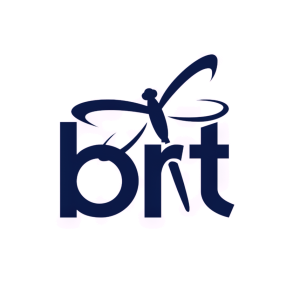BioRestorative Therapies Awarded an STTR Phase I Grant to Explore the Therapeutic Effects of PEG-Peptide Hydrogel-Encapsulated Hypoxic Bone Marrow Stem Cells
BioRestorative Therapies announced a Phase I STTR grant of $256,000 from the NIH to evaluate the therapeutic effects of its hypoxic cultured bone marrow-derived stem cells (BRTX-100) with a novel PEG-peptide hydrogel. This collaboration with Dr. Lori Setton aims to optimize therapeutic delivery methods. Successful completion of this phase could lead to applications for Phase II funding, potentially reaching $1 million. The grant demonstrates recognition of BioRestorative's innovative approach to stem cell therapies, particularly in treating chronic lower back pain.
- Awarded a Phase I STTR grant for $256,000.
- Funding will support innovative research into hypoxic cultured stem cells, enhancing therapeutic potential.
- Collaboration with Dr. Lori Setton at Washington University could lead to advancements in treatment.
- None.
Insights
Analyzing...
MELVILLE, N.Y., Jan. 04, 2022 (GLOBE NEWSWIRE) -- BioRestorative Therapies, Inc. (the “Company" or “BioRestorative”) (NASDAQ:BRTX), a life sciences company focused on stem cell-based therapies, today announced that it has been awarded a Small Business Technology Transfer (STTR) Phase I grant for
Dr. Setton developed the hydrogel from a PEG backbone conjugated with a proprietary formulation of peptides mimicking laminin and other matrix proteins selected for their ability to modulate cell phenotype and biosynthesis. The STTR aims to define the therapeutic potential and mechanism by which the newly synthesized hydrogel can optimally support the therapeutic delivery of hypoxic cultured bone marrow-derived stem cells.
“The National Institutes of Health funds companies with the most innovative, cutting-edge ideas that have the potential to become commercial successes and make important societal impacts,” said Lance Alstodt, CEO of BioRestorative Therapies.
“We are tremendously grateful and honored to have been awarded this Phase I STTR. This collaboration is an important milestone that demonstrates our commitment to developing and expanding our product pipeline.”
All proposals submitted to the NIH SBIR/STTR program undergo a rigorous merit-based review process. Once a small business is awarded a Phase I SBIR/STTR grant (up to
“We are thrilled to collaborate with BioRestorative Therapies on this project. By receiving this grant, we will be able to evaluate the therapeutic benefits of our PEG-peptide hydrogel in combination with BioRestorative’s hypoxic cultured stem cells,” said Dr. Lori Setton, co-investigator on this project.
About BioRestorative Therapies, Inc.
BioRestorative Therapies, Inc. (www.biorestorative.com) develops therapeutic products using cell and tissue protocols, primarily involving adult stem cells. Our two core programs, as described below, relate to the treatment of disc/spine disease and metabolic disorders:
• Disc/Spine Program (brtxDISC™): Our lead cell therapy candidate, BRTX-100, is a product formulated from autologous (or a person’s own) cultured mesenchymal stem cells collected from the patient’s bone marrow. We intend that the product will be used for the non-surgical treatment of painful lumbosacral disc disorders or as a complementary therapeutic to a surgical procedure. The BRTX-100 production process utilizes proprietary technology and involves collecting a patient’s bone marrow, isolating and culturing stem cells from the bone marrow and cryopreserving the cells. In an outpatient procedure, BRTX-100 is to be injected by a physician into the patient’s damaged disc. The treatment is intended for patients whose pain has not been alleviated by non-invasive procedures and who potentially face the prospect of surgery. We have received authorization from the Food and Drug Administration to commence a Phase 2 clinical trial using BRTX-100 to treat chronic lower back pain arising from degenerative disc disease.
• Metabolic Program (ThermoStem®): We are developing a cell-based therapy candidate to target obesity and metabolic disorders using brown adipose (fat) derived stem cells to generate brown adipose tissue (“BAT”). BAT is intended to mimic naturally occurring brown adipose depots that regulate metabolic homeostasis in humans. Initial preclinical research indicates that increased amounts of brown fat in animals may be responsible for additional caloric burning as well as reduced glucose and lipid levels. Researchers have found that people with higher levels of brown fat may have a reduced risk for obesity and diabetes.
Forward-Looking Statements
This press release contains "forward-looking statements" within the meaning of Section 27A of the Securities Act of 1933, as amended, and Section 21E of the Securities Exchange Act of 1934, as amended, and such forward-looking statements are made pursuant to the safe harbor provisions of the Private Securities Litigation Reform Act of 1995. You are cautioned that such statements are subject to a multitude of risks and uncertainties that could cause future circumstances, events or results to differ materially from those projected in the forward-looking statements as a result of various factors and other risks, including, without limitation, those set forth in the Company's latest Form 10-K filed with the Securities and Exchange Commission. You should consider these factors in evaluating the forward-looking statements included herein, and not place undue reliance on such statements. The forward-looking statements in this release are made as of the date hereof and the Company undertakes no obligation to update such statements.
CONTACT:
Email: ir@biorestorative.com








